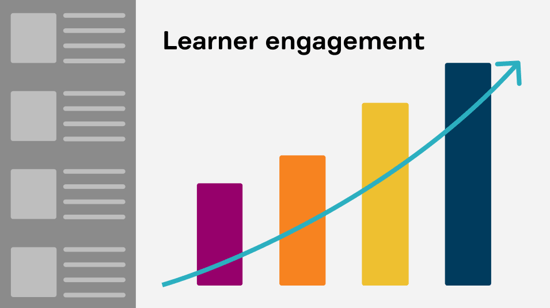
On the lookout for the right edtech tools for remote learning? Or maybe searching for something to boost synchronous instruction?
Crisis of choice has certainly made it difficult to, well, choose the remote learning software that’s best for your school or district (and, speaking of crisis of choice, a quick Google search also yields dozens of articles about the “best remote learning tools”).
That’s why we’ve taken a different approach. Choosing edtech is less about a long list of available tools and more about the edtech essentials that every school needs.
So let’s get to it – here are 10 essentials to have on your radar.
1. Video creation
Why? Because video is the present and future, and it’s a medium that students already love. That’s half the battle, right?
Video creation opens up a world of learning opportunities for students. It’s not just about flexing their creative muscles; video fosters standards-aligned learning through “show what you know” instruction.
It’s a medium built to develop students’ communication and digital literacy skills, no matter the assignment or project (and, by the way, it’s an A+ tool for project-based learning).
WATCH: Students at Plato Learning Academy benefit greatly from using WeVideo.
Fun fact: The WeVideo video editor is used by two-thirds of the Top 100 U.S. school districts for all sorts of learning, including green screen activities, video clubs, passion projects, and podcasting & videocasting.
2. Real-time collaboration
Why? Whether students are learning asynchronously or synchronously, real-time collaboration is a way to make learning feel connected. No matter the remote learning software you choose, your goal should be for learning to remain organic.
Real-time collaboration satisfies this goal. Educators are able to provide quick feedback. Students can comment on each other’s work.
Even better – a twist on RTC with an audience response system. Turn basic presentations into something that sparks impactful (and real-time) audience participation with live polls, Q&As, surveys, etc.
Fun fact: PlayPosit by WeVideo offers a web-based audience response system that can be used on any device. Why not try it out in your next PD session?
3. Interactivity
Why? Here’s the truth, the whole truth, and nothing but the truth – video is a powerful medium for learning, but interactive video is considered to be three times more effective.
The reasons speak for themselves (but we’ll provide a few anyway). With interactive video, learners aren’t just absorbing information, they’re communicating directly with it. A 10-minute video about the scientific method becomes a 10-minute lesson with 7 interaction points – think multiple choice questions, free response, polls, etc. – and suddenly that content is sticking.
And Bloom’s taxonomy? Hello! Interactive video makes it easier for instructional video content to satisfy higher-order thinking skills, again and again and again.
WATCH: 5 reasons why DC Public Schools LOVES PlayPosit.
Fun fact: Educators have access to dozens of interaction points (called “Bulbs”) with PlayPosit. Easily add multiple choice questions, fill-in-the-blanks, free responses, branched pathways, and more to video content, or create full asynchronous courses with Playlists.
4. Templates
Why? What some claim to be the best edtech tools for remote learning might not be the easiest to learn. And again, with crisis of choice at the forefront of any decision-making around edtech tools for remote learning, the need for ease is like the need for dental hygiene: It’ll make other aspects of your life easier.
So goes the world with templates. Any edtech you employ with your learners should come with templates that make it not only easy to replicate lessons and processes, but quick to scale. Cross-departmental collaboration and accelerated learning? Check.
Fun fact: Both WeVideo and PlayPosit come fully loaded with video creation templates and ready-made templated interactions. It’s the best of both worlds, made for educators and learners.
5. Assessment
Why? Of course you want learners to engage with formative and summative assessments; but the key with any top-notch edtech is that it also helps reduce the time teachers spend assessing (and, really – grading).
Imagine a world where interactive assessments auto-grade and seamlessly integrate with other tools (like your LMS for gradebook syncing – more on this in a few!).
Fun fact: You can make this world a reality with WeVideo and PlayPosit. Foster high-impact interactive video learning, with the data to support it.
6. Learner analytics
Why? Using remote learning software for assessment is one thing, but what impact is it having? You need analytics to support and improve the instructional narrative.
This is especially important when implementing edtech at a school and/or district level. Rigorous analytics on the backend should give you a clear idea of the impact that your chosen edtech tool is having on learners and the learning community at large.

Fun fact: PlayPosit offers everything an educator needs to make data-driven decisions. From the classroom level – where teachers can use performance and behavioral-based data to tailor lessons, remediate concepts, and differentiate instruction – to the district level – where education leaders can garner a high-level view of district-wide learner performance – analytics form the backbone of PlayPosit’s interactive learning tools.
7. LMS integration
Why? So maybe you’re already using an LMS like Schoology, Canvas, ClassLink, or Google Classroom – the last thing you need is a new piece of shiny edtech that doesn’t integrate, right?
Let’s put it this way – the best edtech tools for remote learning integrate. Simple as that. With a bottomless bag of options, it’s no surprise that you might be using more than one “thing.” Quality edtech makes impactful learning easier, and part of that means being able to integrate with other tech.
Fun fact: WeVideo integrates with popular learning management systems like Schoology, Canvas, and Google Classroom, and PlayPosit integrates with even more!
8. Safety & security
Why? Unfortunately, we live in a world rife with data breaches and privacy violations. When it comes to edtech, any software should have cybersecurity measures in place to protect learners’ and educators’ privacy.
This becomes even more pertinent when implementing edtech at a large scale. Schools and districts need platforms they can trust.
Fun fact: WeVideo and PlayPosit are both FERPA and COPPA compliant.
9. Tech stack reduction
Why? See again: Crisis of choice and, more importantly, crisis of budget. Why spend dollars on multiple solutions when one will do the job?
Therein lies the beauty of finding edtech tools for remote learning (or in-person instruction) that satisfy the needs of many, for the price of one.
What’s more, reducing the tech stack not only helps budget constraints, it eases the burden on educators and students having to learn the ins-and-outs of new tools. With tool overload, the quality of “more” quickly becomes the woe of all.
Fun fact: Together, WeVideo and PlayPosit create an end-to-end platform for interactive video learning. Make engaging content in WeVideo's easy-to-use video editor, then seamlessly export to PlayPosit and add interactive elements.
10. Something for all learners
Why? Much of the current edtech landscape focuses on the student. Rightfully so. However, wouldn’t it be grand to use edtech that satisfies the needs of any learner, child or adult?
Post-pandemic education faces more challenges than ever before. There’s the learning disruption dilemma: even students who spent a month or less learning remotely missed up to 7-10 weeks of instructional time.
Then there’s teacher burnout: in 2022, schools were short 300,000 educators! Teachers need time-savings and legitimate growth opportunities. With edtech that’s made for all learners, these needs can be met.

Teachers can use edtech in their classrooms to facilitate deeper learning and assess students with ease. Instructional coaches and professional development directors can use the same tools to facilitate strong PD sessions and other learning opportunities.
Fun fact: PlayPosit empowers educators to be lifelong learners and track progress towards certification needs with micro-credentialing.